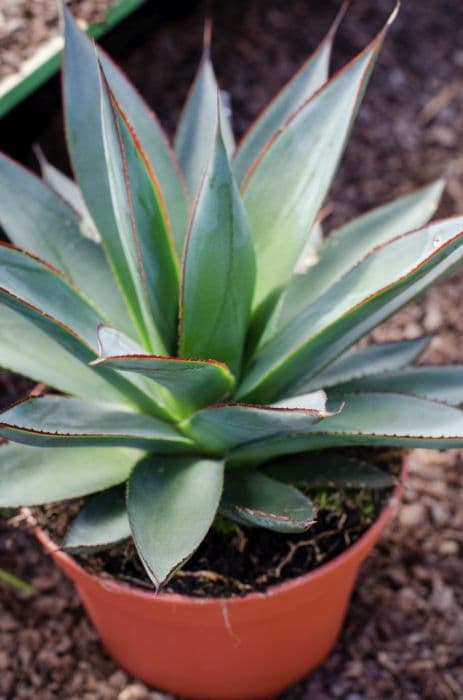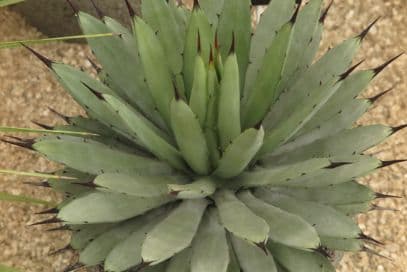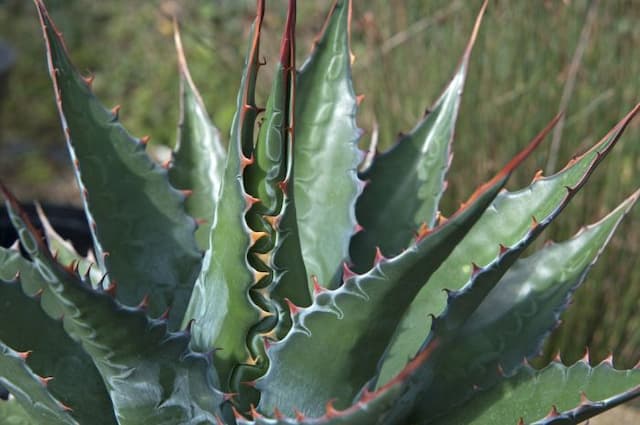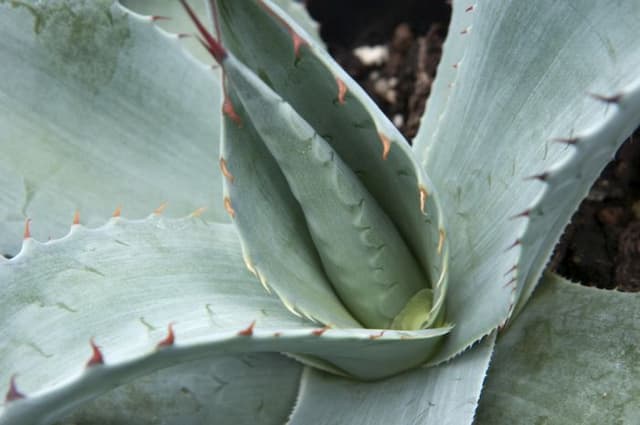White Blistered Massonia Massonia pustulata

ABOUT
Massonia pustulata, commonly known as White Blister, is a unique and visually striking bulbous plant. It has a distinctive appearance characterized by a pair of broad, opposite leaves which lay flat on the ground in an almost symmetrical display. These leaves are deep green and commonly bear numerous small pustules or blisters on the upper surface, giving the plant a textured feel. These blisters can have a warty look to them, which is quite distinctive and adds to the tactile interest of the plant. In the center of these ground-hugging leaves, during the blooming season, White Blister produces an unusual and eye-catching flower. The inflorescence consists of a cluster of small, star-shaped, white blossoms bunched tightly together. The flowers are quite fragrant, especially at night, possibly to attract the specific pollinators that visit them under the cover of darkness. The mass of blooms creates a contrasting button-like effect that can be quite prominent against the backdrop of the fleshy leaves. The overall appearance of White Blister is one that commands attention due to its unusual leaf morphology and the beauty of its winter-blooming flowers. This combination of features makes it a plant that typically generates interest among plant enthusiasts and collectors.
About this plant
 Names
NamesFamily
Asparagaceae
Synonyms
White Blister, Pustulated Massonia, Whiteheads, Blister Plant
Common names
Daubenya pustulata, Whiteheadia pustulata, Massonia echinata, Massonia sessiliflora, Massonia zeyheri.
 Toxicity
ToxicityTo humans
Massonia pustulata, commonly known as simply Massonia, does not have a well-documented profile for toxicity to humans. There is limited information available on the plant's effects if ingested or handled. As with any plant, however, it is prudent to exercise caution and avoid ingesting parts of the plant since its toxicity to humans has not been extensively studied or reported. Should any adverse reactions occur after coming into contact with or ingesting Massonia, one should seek medical attention promptly.
To pets
Massonia pustulata, or Massonia, is not widely known to be toxic to pets, including dogs and cats. However, due to the general lack of specific studies on its toxicity in pets, it is wise to err on the side of caution and prevent pets from ingesting the plant. If a pet does consume Massonia and exhibits symptoms such as vomiting, diarrhea, drooling, or unusual behavior, it is important to consult a veterinarian immediately.
 Characteristics
CharacteristicsLife cycle
Perennials
Foliage type
Deciduous
Color of leaves
Varies
Flower color
White
Height
6 inches (15 cm)
Spread
8 inches (20 cm)
Plant type
Bulb
Hardiness zones
9
Native area
South Africa
Benefits
 General Benefits
General Benefits- Ornamental Value: The Massonia pustulata, commonly known as Blister Bush, has a unique and attractive appearance, with its distinctive pustulate leaves and white flowers that can add an exotic look to gardens or indoor collections.
- Drought Tolerance: Being a bulbous plant native to arid regions, it is highly adapted to survive periods of drought, requiring minimal watering and maintenance, which makes it suitable for xeriscaping and water-efficient gardening.
- Low Maintenance: This plant is relatively easy to care for, with no need for frequent fertilization or pruning, making it ideal for gardeners of all skill levels.
- Seasonal Interest: It produces flowers mainly in the winter season, which provides visual interest during a time when many other plants are dormant, thus ensuring year-round variety in the garden or home.
- Pollinator Attraction: The flowers of Massonia pustulata can attract a variety of pollinators, such as bees and butterflies, which play a role in the local ecosystem by supporting pollination.
 Medical Properties
Medical PropertiesThis plant is not used for medical purposes.
 Air-purifying Qualities
Air-purifying QualitiesThis plant is not specifically known for air purifying qualities.
 Other Uses
Other Uses- The bulb of Massonia pustulata can be ground to produce a paste used for adhesive purposes in traditional crafts and repairs.
- The leaves can be used to create a natural green dye for textiles, providing a source of colorant for fabrics.
- By pressing the leaves, a unique botanical print can be transferred onto paper, creating natural artworks for decoration.
- The sturdy leaves can be used in floral arrangements to add unique texture and visual interest.
- In some cultures, the fibrous parts of the plant may be used as filling material for small pillows or padding in traditional furniture.
- The plant can serve as an educational tool to demonstrate the variety of survival strategies plants have evolved for arid environments.
- Massonia pustulata's distinctive look can be used as inspiration for botanical illustrations and exotic garden designs.
- Dried Massonia pustulata specimens can be displayed in natural history collections to exemplify South African flora.
- The thick leaves might be used in creating small, decorative pressed flower bookmarks or similar items.
- When dried, the plant's flowers retain their shape, making them suitable for inclusion in everlasting, dried flower arrangements.
Interesting Facts
 Feng Shui
Feng ShuiThe Massonia pustulata, commonly known as Pebble Plant, is not used in Feng Shui practice.
 Zodiac Sign Compitability
Zodiac Sign CompitabilityThe Pebble Plant is not used in astrology practice.
 Plant Symbolism
Plant Symbolism- Resilience: Massonia pustulata, also known as the White Bladder Sage, is able to survive tough environmental conditions, symbolizing the ability to withstand adversity.
- Rarity: Being a less common plant, it represents uniqueness and the beauty found in rare occurrences.
- Grounding: This plant grows close to the ground, symbolizing a down-to-earth nature and the importance of staying grounded.
 Water
WaterFor Massonia pustulata, commonly known as blister plant, proper watering is essential. During its growing season in the fall and winter, water the blister plant when the top inch of soil has dried out, which typically equates to once every one to two weeks. Ensure you provide enough water to moisten the soil evenly but avoid waterlogging as this can cause root rot. A rough estimate would be about 8-16 ounces of water for a medium-sized pot every watering session. In the dormant summer period, reduce watering significantly and allow the soil to dry out completely between waterings.
 Light
LightBlister plant thrives in bright, indirect light. Position it in a spot where it can receive plenty of light without being exposed to the harsh midday sun, which can damage its leaves. An east or west-facing windowsill is an ideal location for this plant, providing it with the gentle morning or afternoon light it prefers.
 Temperature
TemperatureBlister plant does best in temperatures ranging from about 50 to 75 degrees Fahrenheit. It can survive temporary dips down to 32 degrees Fahrenheit but should not be exposed to frost. To ensure healthy growth, keep it in an environment that avoids extremes, steering clear of drafts and direct heat sources.
 Pruning
PruningPruning the blister plant is typically done to remove any dead or diseased foliage and to maintain its shape. This is best done after the blooming period, usually in the late winter before new growth begins. Prune sparingly, as the plant generally does not require heavy pruning, and always use clean, sharp scissors or pruning shears to make precise cuts.
 Cleaning
CleaningAs needed
 Soil
SoilPustulata plants, commonly known as Massonia pustulata, require a well-draining soil mix consisting of one part sand or perlite, one part compost, and one part loam. A slightly acidic to neutral pH of 6.0 to 7.0 is ideal for healthy growth.
 Repotting
RepottingMassonia pustulata, often known as pustulata, should be repotted every 2 to 3 years to avoid becoming root-bound and to refresh the soil, ensuring it remains well-draining and nutrient-rich.
 Humidity & Misting
Humidity & MistingPustulata, widely referred to as Massonia pustulata, thrives in moderate humidity levels, typical of indoor environments; they do not require high humidity but should not be placed in very dry settings.
 Suitable locations
Suitable locationsIndoor
Place pustulata in bright, indirect light with well-draining soil.
Outdoor
Plant pustulata in partial shade with shelter from strong winds.
Hardiness zone
9-11 USDA
 Life cycle
Life cycleMassonia pustulata, commonly known as blister plant, begins its life cycle as a seed, which germinates in autumn in its native habitat. After germination, the seedling grows two ground-level leaves that are conspicuously pustulate, which gives the plant its common name. These leaves are adapted to the arid environment, helping to conserve water. During winter, the blister plant produces a short, dense inflorescence with sweet-smelling white flowers, which are often pollinated by nocturnal insects such as moths. After pollination and seed set, the above-ground foliage dies back in the summer dry season, with the plant surviving as a dormant bulb underground. The cycle restarts with the next cool, wet season, which triggers the growth of new leaves and the continuation of the perennial life cycle.
 Propogation
PropogationPropogation time
Early spring
Propogation: Massonia pustulata, commonly known as the Pebbled Tiger's Jaw, is often propagated by seeds. The most popular method involves sowing the seeds in autumn as this aligns with the plant's natural growth cycle. The seeds should be placed on top of a well-draining soil mix and lightly covered with a thin layer of sand or fine grit to ensure they are not deeply buried. The container with seeds should be kept moist but not waterlogged, and placed in a warm area with temperatures around 65 to 75 degrees Fahrenheit (18 to 24 degrees Celsius) to encourage germination. Once the seedlings have developed a few true leaves, they can be carefully transplanted to individual pots.









